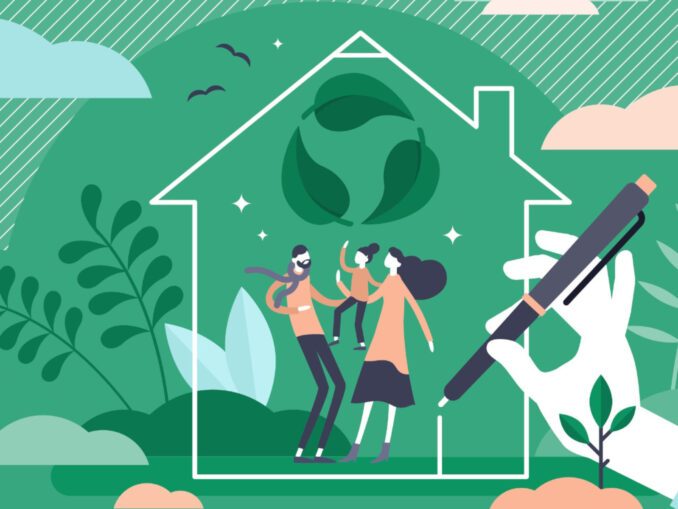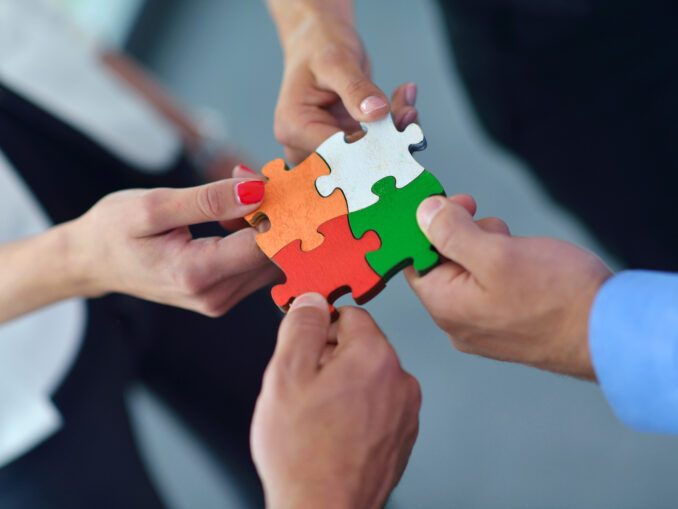
Marcus Engman, Creative Director at IKEA, believes a circular mindset can change our world. “We’re moving into a future where waste is the raw material. It’s about designing from the bottom up, and thinking in components,” he says. IKEA are committed to being 100% circular by 2030.
“I could not have imagined in the early 1990s when I visited my first IKEA store to furnish my apartment in Stockholm that 30 years later I would be adding the word “circular” to the key IKEA brand attributes of design, affordability, and being a pain to assemble. I, like many then, considered IKEA furniture to be disposable. Sustainability was not on my radar, or that of most of us. How times have changed!”
What is Circularity?
At its core, the circular economy is all about keeping products, materials, and resources in circulation for as long as possible. This means designing products that are durable, repairable, and upgradable, so they can be used and reused multiple times.
One of the key principles of the circular economy is to reduce waste at every stage of a products’ lifecycle. Instead of discarding items after use, the goal is to recover valuable materials and reintegrate them into the production process. This approach does not just conserve resources: it can also significantly diminish greenhouse gas emissions by decreasing the energy required for manufacturing from scratch.
IKEA’s four circular loops
IKEA’s approach to circularity is based on what they call four ‘circular loops’: Reuse, Refurbishment, Remanufacturing, and Recycling. They think of the loops as a hierarchy, with product ‘reuse’ at the top as the most desirable; what can’t be reused is refurbished, and so on. Only when they have exhausted the other three possibilities do they consider recycling. This approach drives how IKEA develop products and source materials.
Reuse
IKEA furniture has long been a staple of charity shops and second-hand stores. Now with their own Re-shop and Re-use and Buyback and Resell programmes (both in-store and online), IKEA are helping customers to sell and buy preloved pieces. In 2022 32 million products were resold in IKEA’s ‘circular hubs’.
Refurbishment
IKEA are committed to helping us to keep their products in use for as long as possible. This means things like making them easier to take apart and reassemble so as we can bring them with us when we move home. It’s also about making them easy to repair. Since 2020 customers have been able to order, for free, assembly parts such as nuts, bolts and screws to fix broken products. IKEA handed out 21.9 million spare parts to customers in 2022 which they claim extended the lifespan of pieces of furniture for nearly 2 million customers.
IKEA also offer replacement covers for seating and are piloting ways of selling replacement parts such as armrests, cushions and drawer fronts at affordable prices. They have lots of innovation going on to help with ‘Refurbishment’, including initiatives like the Learning Lab in their Greenwich store in the UK where shoppers can learn how to up-cycle their IKEA furniture, and in Switzerland following an ideation process with SDGXCHANGE they are piloting leasing furniture, with IKEA taking it back after a year and refurbishing it before leasing it again.
Remanufacturing
Remanufacturing of products is a process by which usable parts from dismantled products are utilized in production of new products, increasing resource recovery and potentially lowering the cost of the final product. Using standardised fittings is one of the ways IKEA is increasing the number of parts that are reusable.
Recycling
IKEA are very clear that “Recycling is not the answer”, and is only used as a last resort. But again they are showing other companies how to innovate in recycling. Take what they are doing with mattresses in the Netherlands (and are planning to roll out to other countries). They estimate that 1.7 million mattresses per year in Netherlands go into waste. IKEA have pioneered a business model with a third party where consumers return mattresses (of any type, not just IKEA ones) to a facility where they go through a reverse-manufacturing process, meaning they are broken up into three or four categories of material and then sold back into the supply chain. As Jesper Brodin, CEO of Ingka Group (the holding company for most of IKEA retail outlets), told Time: “The beauty is it’s a quite okay business. It’s not a gold mine, but it’s a plus. It’s the new business model that will actually become profitable at the same time as you take care of a huge problem.”
Being circular is good business
IKEA is very clear that profit is important – and it sees circularity as a long-term corporate strategy, designed to mitigate some of the pressing long-term risks facing their business, such as resource scarcity. Adopting a circular approach is not just good for the planet, it’s also good for the consumer and the business.
Published on February 15, 2024
Source: Momentahub
Author: Jean Callanan is a strategic thinking consultant and sustainable innovation facilitator. She blogs about companies doing inspiring things to create a better world.
SDG solution: SDG 12
About ‘Green Shoots – Stories from Business for our Planet’: Green Shoots is a weekly blog by Jean Callanan that shares stories of businesses and brands doing inspiring and innovative things to address #climatechange and create a better world.



